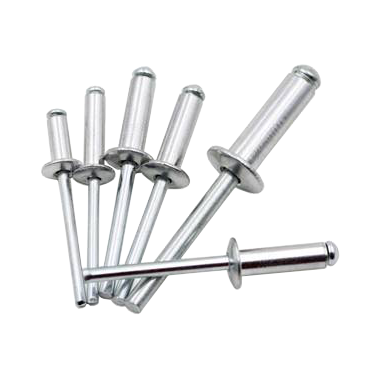Blind rivet codifications, or specifications, typically follow a standardized system to convey important information about the rivet’s characteristics. The specific codification system may vary slightly between manufacturers, but there are common elements. Here is a general guide to understanding blind rivet codifications:
- Material:
- The first part of the code often indicates the material used for the blind rivet. Common materials include aluminum (A), steel (S), stainless steel (SS), and others.
- Diameter:
- The diameter of the rivet is usually specified next. It can be denoted by a number, which represents the nominal diameter of the rivet body in 1/32th inches.
- Length:
- The length of the rivet, including the head, is often included in the code. This can be represented by a number indicating the length in 1/16th inches.
- Head Style:
- The head style is often denoted by a letter or a combination of letters. For example:
- “D” for dome head
- “CS” for countersunk head
- “LF” for large flange head
- Mandrel Type:
- If the blind rivet has a mandrel, the type of mandrel may be indicated in the code. For example:
- “A” for aluminum mandrel
- “S” for steel mandrel
- “SS” for stainless steel mandrel
- Grip Range:
- The grip range, or the range of material thickness the rivet can accommodate, may be included in the code. This is especially important for selecting the right rivet for a specific application.
- Other Features:
- Additional features, such as the type of rivet (open-end, closed-end, multi-grip) or specific coatings for corrosion resistance, may be included in the code.
Here’s an example code:
- A46LF: This could represent an aluminum blind rivet (A) with a 1/8-inch diameter (4/32), 3/8-inch length (6/16), and a large flanged head (LF).
It’s important to note that the specific format and details of the codification may vary between manufacturers, so it’s crucial to refer to the manufacturer’s documentation and specifications for accurate information about a particular blind rivet.
450-217-0778
